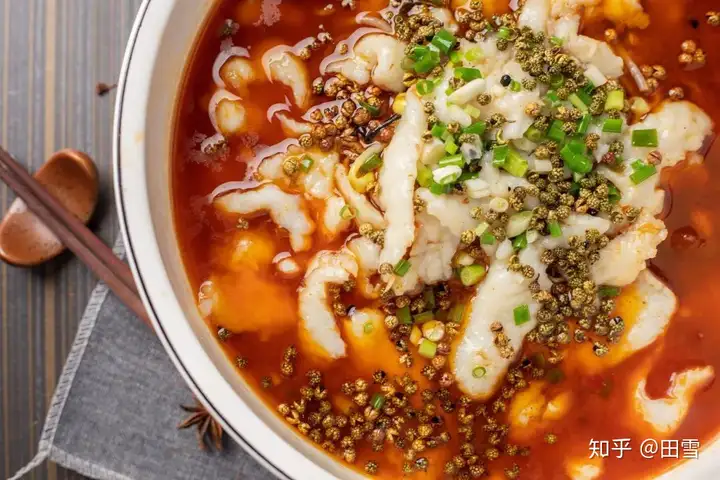科学家们已经破译了一块巧克力放进嘴里被吃掉后发生的物理变化过程。当它从固体变为丝滑的乳状液时,许多人都发现自己无法抗拒。英国利兹大学(University of Leeds)的跨学科研究团队希望通过分析上述每一个步骤,开发出新一代巧克力,这种巧克力的顺滑口感和质地不变,但吃起来会更健康。
共聚焦显微镜下融化的巧克力 来源:Dr Siavash Soltanahmadi
来源 University of Leeds
翻译 杨梦
编辑 魏潇
在入口的瞬间,巧克力的口感来自于它变顺滑的方式。这要么来自于巧克力本身的成分,要么是唾液,要么是两者的结合。
当一块巧克力与舌头接触时,脂肪几乎立刻发挥了关键作用。之后,固体可可颗粒被释放出来,开始变成影响口感的重要因素,因此巧克力内层的脂肪(对口感)所起的作用相当有限,在不影响到巧克力口感的情况下可以降低它的含量。
利兹大学食品科学与营养学院的胶体与表面学教授 Anwesha Sarkar 说:“润滑科学从机理角度解释了食物在口中产生实际感觉的过程。你可以利用这些知识去设计有着更佳口感、质地或对健康更有好处的食物。”
“一块巧克力,脂肪含量不论是 5% 还是 50%,都会在口腔中形成液滴,并带来巧克力(应有的)那种口感。然而,人们很少研究的是,巧克力中脂肪成分的位置在巧克力变顺滑过程中的各个阶段都很重要。”
“我们的研究表明,想让巧克力的口感变得非常好,最重要的是脂肪层需要位于巧克力的外层,其次是要用脂肪有效包裹可可颗粒。”
这项发表在《美国化学会-应用材料与界面》(ACS Applied Materials and Interface)上的成果没有研究巧克力的味道,而是将重点放在了它的口感和质地上。
测试是在利兹大学设计的 3D 打印“人造舌头”上,使用奢侈品牌的黑巧克力进行的。研究人员使用了包括原位成像在内的摩擦学领域的分析技术来进行这项研究。
摩擦学研究的是表面与流体的相互作用,以及它们之间的摩擦程度以及润滑所起的作用:应用在巧克力上,就是唾液或巧克力形成的流体。巧克力进嘴后,这些机制就会开始发挥作用。
共聚焦显微镜下,融化的巧克力与唾液形成的结构。来源:Dr Siavash Soltanahmadi
当巧克力接触到舌头时,它会释放出一层脂肪膜,覆盖在舌头和口腔其他表面上。正是这层脂肪膜让巧克力在入口的整个过程中都产生很顺滑的感觉。
利兹大学食品科学与营养学院的 Siavash Soltanahmadi 博士是该研究的第一作者,他说:“我们相信,随着对人们吃巧克力时的物理机制的逐步了解,一种新型巧克力将会被开发出来,它可以提供高脂肪巧克力的口感和体验,同时也是一个更健康的选择。
“我们的研究为制造商可以巧妙地设计制造黑巧克力以降低整体脂肪含量提供了可能性。我们认为黑巧克力可以制作成一种梯度分层的结构——脂肪仅仅覆盖在巧克力块和可可颗粒的表面,提供人们渴望的那种自我放纵的体验,而巧克力内部不会添加太多的脂肪。”
商业情报机构 MINTEL 的调查显示,预计未来五年(2022-2027年)内英国巧克力的销售额将增长 13%,达到 66 亿英镑。
研究人员认为,这项研究中使用的物理技术或许可以用于研究其他发生相变的食品,例如可从固体变为液体的冰淇淋、人造黄油或奶酪等。
该项目获得了欧洲研究理事会根据欧盟“地平线 2020”科研创新计划提供的资助。
原文链接:
https://www.eurekalert.org/news-releases/976183
论文信息【标题】Insights into the multiscale lubrication mechanism of edible phase change materials
【作者】Siavash Soltanahmadi, Michael Bryant, and Anwesha Sarkar*
【期刊】ACS Applied Materials & Interfaces
【日期】January 12, 2023
【DOI】 https://doi.org/10.1021/acsami.2c13017
【摘要】Investigation of a lubrication behavior of phase change materials (PCM) can be challenging in applications involving relative motion, e.g., sport (ice skating), food (chocolates), energy (thermal storage), apparel (textiles with PCM), etc. In oral tribology, a phase change often occurs in a sequence of dynamic interactions between the ingested PCM and oral surfaces from a licking stage to a saliva-mixed stage at contact scales spanning micro- (cellular), meso- (papillae), and macroscales. Often the lubrication performance and correlations across length scales and different stages remain poorly understood due to the lack of testing setups mimicking real human tissues. Herein, we bring new insights into lubrication mechanisms of PCM using dark chocolate as an exemplar at a single-papilla (meso)-scale and a full-tongue (macro) scale covering the solid, molten, and saliva-mixed states, uniting highly sophisticated biomimetic oral surfaces with in situ tribomicroscopy for the first time. Unprecedented results from this study supported by transcending lubrication theories reveal how the tribological mechanism in licking shifted from solid fat-dominated lubrication (saliva-poor regime) to aqueous lubrication (saliva-dominant regime), the latter resulted in increasing the coefficient of friction by at least threefold. At the mesoscale, the governing mechanisms were bridging of cocoa butter in between confined cocoa particles and fat coalescence of emulsion droplets for the molten and saliva-mixed states, respectively. At the macroscale, a distinctive hydrodynamic viscous film formed at the interface governing the speed-dependent lubrication behavior indicates the striking importance of multiscale analyses. New tribological insights across different stages and scales of phase transition from this study will inspire rational design of the next generation of PCM and solid particle-containing materials.
【链接】
https://pubs.acs.org/doi/10.1021/acsami.2c13017
本文来自微信公众号“科研圈”。如需转载,请在“科研圈”后台回复“转载”,或通过公众号菜单与我们取得联系。相关内容禁止用于营销宣传。
▽ 精彩回顾 ▽
点个“在看”,及时获取最新学术资讯






